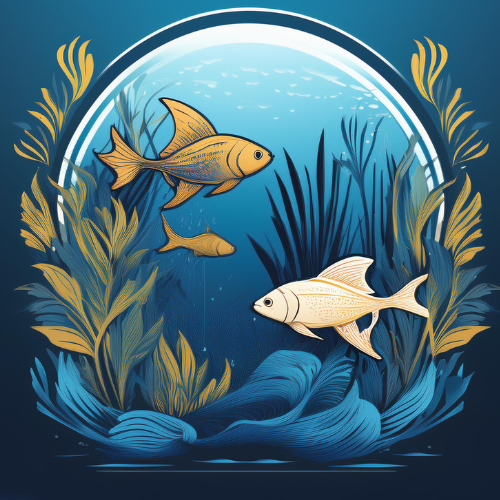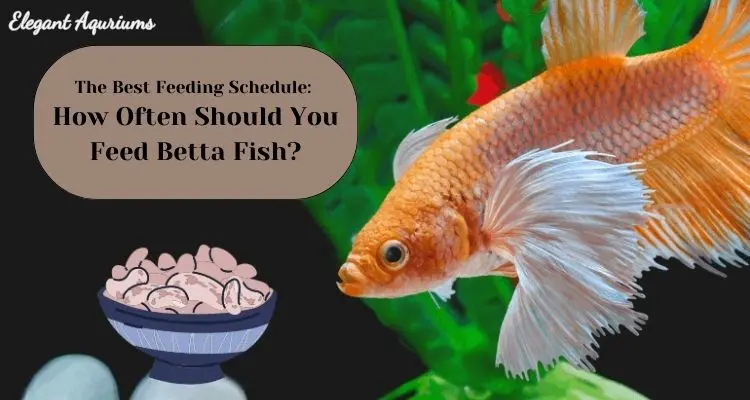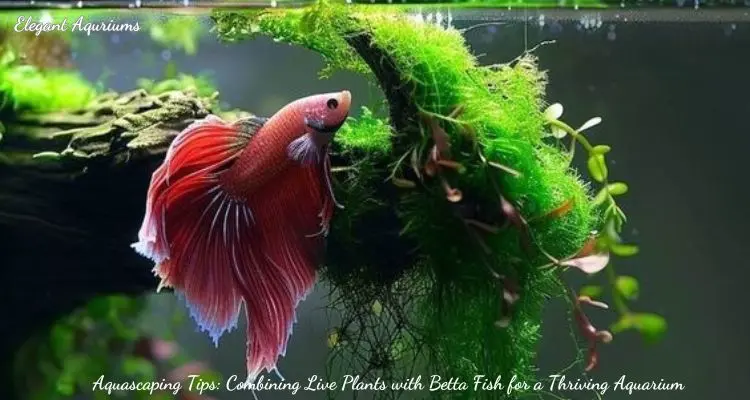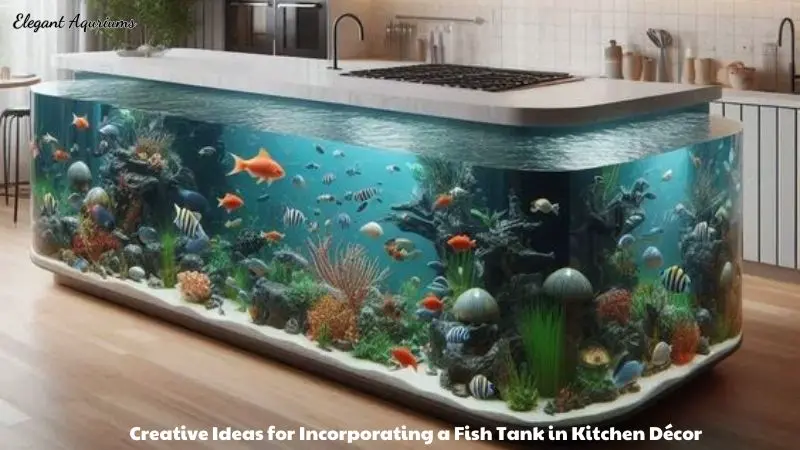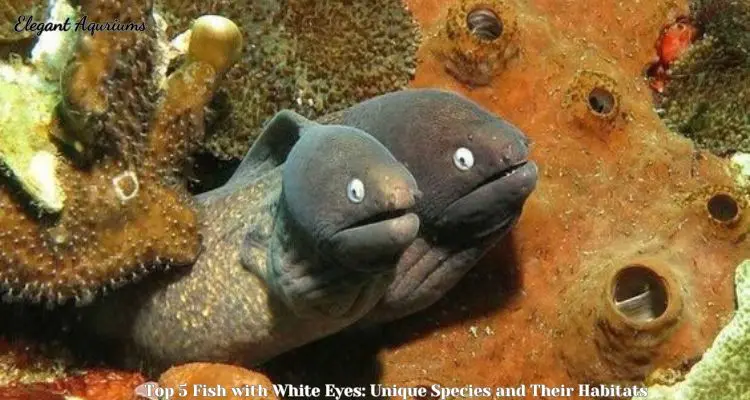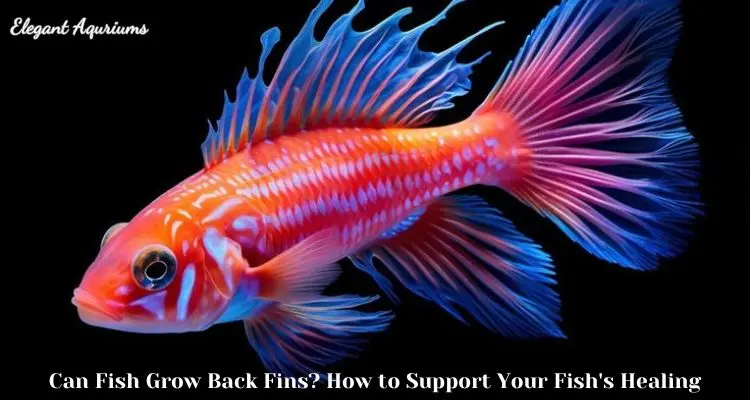Fish care
The Best Feeding Schedule: How Often Should You Feed Betta Fish?
“How often should you feed betta fish?” is a common question among betta owners. These vibrant, low-maintenance fish, known for their striking colors and flowing fins, require proper feeding to ensure their health and longevity. In this comprehensive guide, Elegant Aquriums will explore the best feeding schedule for bettas, what types of food are most suitable, how much to feed them, and tips for maintaining their health through proper nutrition.
Understanding the Natural Diet of Betta Fish
Betta Fish in the Wild
To understand how often you should feed your betta fish, it’s helpful to first consider their natural diet in the wild. Betta fish are carnivorous by nature and primarily feed on insects and insect larvae. In their natural habitat, which includes shallow waters such as rice paddies, ponds, and slow-moving streams in Southeast Asia, bettas are accustomed to eating small amounts of food frequently throughout the day.
Dietary Needs of Betta Fish
Given their carnivorous diet, betta fish require a diet rich in protein. In captivity, betta fish can thrive on a diet that mimics their natural feeding habits, including high-quality betta pellets, freeze-dried or live foods like bloodworms, brine shrimp, and daphnia. Providing a balanced diet that meets their protein needs is essential for their overall health and vibrant coloration.
How Often Should You Feed Betta Fish?
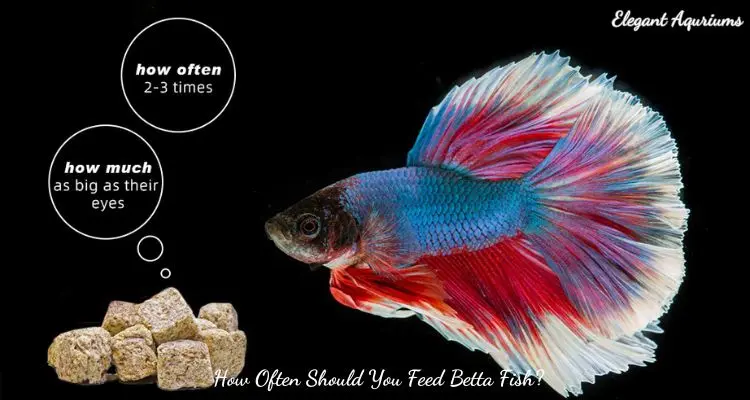
Ideal Feeding Frequency
For most betta fish, feeding them once or twice a day is ideal. Feeding twice a day—once in the morning and once in the evening—helps mimic their natural feeding patterns and ensures they receive adequate nutrition without overfeeding. It’s important to provide small, manageable portions at each feeding to avoid the risk of overeating, which can lead to health problems such as bloating and constipation.
Adjusting Feeding Frequency Based on Age and Health
- Juvenile Bettas: Younger bettas (under six months old) have higher metabolic rates and energy needs due to their growth. For juvenile bettas, feeding them three times a day in smaller portions is recommended to support their development.
- Adult Bettas: Adult bettas (over six months old) should be fed once or twice a day, depending on their activity level and overall health. If your betta is particularly active or has a higher metabolism, twice-daily feedings may be more appropriate.
- Senior Bettas: Older bettas may have slower metabolisms and reduced activity levels, so they may only require feeding once a day. It’s important to monitor their health closely and adjust feeding as necessary.
Considerations for Feeding Frequency
- Water Temperature: Betta fish are tropical fish that thrive in water temperatures between 76°F and 82°F (24°C to 28°C). In warmer water, their metabolism speeds up, which may increase their appetite. Conversely, in cooler water, their metabolism slows down, and they may not need to eat as often. Always ensure your betta’s tank is maintained at an appropriate temperature to support their feeding and digestion.
- Tank Size and Environment: Bettas kept in larger, well-filtered tanks with consistent water quality tend to have healthier appetites and more stable feeding schedules. A small, poorly maintained tank can stress your betta and lead to a reduced appetite, so it’s important to provide a suitable environment.
Choosing the Right Food for Your Betta
Understanding how often to feed your betta is only part of the equation. Equally important is choosing the right type of food that meets their nutritional needs. As carnivores, bettas thrive on a diet that is high in protein and low in fillers such as grains and plant matter.
Types of Betta Food
There are several types of betta food available on the market, each with its own advantages and considerations. The most common types of betta food include:
Pellets
Betta pellets are a popular choice due to their convenience and nutritional content. These pellets are specifically formulated to meet the dietary needs of betta fish, providing a balanced mix of protein, fats, and other essential nutrients. Pellets are also easy to portion, making it simple to avoid overfeeding. However, it’s important to choose high-quality pellets that are low in fillers and preservatives.
Flakes
Betta flakes are another option, though they are less commonly recommended than pellets. Flakes can be difficult for bettas to eat as they often float on the water’s surface and may not provide the same nutritional balance as pellets. Additionally, flakes can contribute to water pollution if not consumed quickly, as they tend to break down and dissolve in the water.
Freeze-Dried Foods
Freeze-dried foods, such as bloodworms, brine shrimp, and daphnia, are excellent treats for bettas and provide a rich source of protein. These foods closely mimic the natural diet of bettas and can be used to supplement their regular diet. However, freeze-dried foods should not be used as the sole food source, as they can be lacking in certain nutrients. Additionally, it’s important to soak freeze-dried foods in water before feeding to prevent digestive issues.
Frozen Foods
Frozen foods, such as frozen bloodworms, brine shrimp, and mosquito larvae, are another nutritious option for bettas. These foods are often more nutrient-dense than freeze-dried options and can be fed as part of a regular diet. Like freeze-dried foods, frozen foods should be thawed before feeding to prevent choking or digestive issues.
Live Foods
Live foods, such as live brine shrimp, daphnia, and blackworms, are highly nutritious and closely resemble what bettas would eat in the wild. Live foods stimulate a betta’s natural hunting instincts and provide excellent enrichment. However, live foods can carry the risk of introducing parasites or diseases into your tank, so it’s important to source them from reputable suppliers.
How Much Should You Feed Betta Fish?
Portion Size Matters
When feeding your betta fish, it’s crucial to avoid overfeeding, as this can lead to health issues such as obesity, bloating, and poor water quality. A good rule of thumb is to feed your betta an amount of food that they can consume within 2 to 3 minutes. Generally, this equates to about 2 to 3 pellets per feeding, or a similar portion of live or freeze-dried foods.
Adjusting Portions Based on Food Type
- Pellets: Betta pellets are a convenient and nutritionally balanced option for feeding your betta. Most betta pellets are designed to expand when wet, so feeding 2 to 3 pellets per feeding session is usually sufficient.
- Live and Freeze-Dried Foods: If you’re feeding your betta live or freeze-dried foods such as bloodworms or brine shrimp, offer a small portion that can be consumed within a few minutes. These foods are richer in protein and can be used as treats or to supplement their regular diet.
- Flakes: While flakes can be used to feed bettas, they are less ideal than pellets because they often contain fillers and may not provide the same level of nutrition. If using flakes, feed a small pinch that your betta can consume quickly.
Monitoring Your Betta’s Weight and Health
It’s important to regularly observe your betta’s body condition and adjust feeding as necessary. If you notice your betta becoming overweight or developing bloating, reduce the portion size or frequency of feedings. On the other hand, if your betta appears underweight or lethargic, you may need to increase the frequency or portion size.
Avoiding Common Feeding Mistakes
Overfeeding
One of the most common mistakes in betta fish care is overfeeding. Overfeeding can lead to several issues, including:
- Bloating and Constipation: Betta fish have small stomachs, roughly the size of their eye, so it’s easy to overfeed them. Bloating and constipation can result from excessive feeding, causing discomfort and potentially leading to more serious health problems.
- Poor Water Quality: Uneaten food decomposes in the tank, leading to ammonia spikes and poor water quality. This can stress your betta and increase the risk of disease.
Feeding the Wrong Foods
Not all fish foods are suitable for bettas. Avoid feeding your betta generic fish flakes or foods that contain fillers and low-quality ingredients. Always choose high-quality betta-specific pellets and treat foods that are rich in protein.
Inconsistent Feeding Schedule
Consistency is key when feeding your betta fish. An inconsistent feeding schedule can cause stress and digestive issues. Try to feed your betta at the same times each day to establish a routine.
Special Feeding Considerations
- Fasting Days: Incorporating a fasting day once a week can be beneficial for your betta fish. Fasting helps prevent digestive issues and clears out their digestive system, reducing the risk of constipation and bloating. On fasting days, simply skip one or both feeding sessions.
- Treats and Variety: While betta pellets should make up the bulk of your betta’s diet, offering variety through live or freeze-dried foods can provide enrichment and additional nutrients. Treats such as bloodworms, brine shrimp, and daphnia can be given a few times a week but should not replace their staple diet.
- Feeding During Breeding: If you’re breeding bettas, their nutritional needs increase, especially for the female betta. During breeding, provide more frequent feedings with high-protein foods to support the energy demands of spawning and egg production. After spawning, continue feeding the female a nutritious diet to aid in her recovery.
What to Do If You Need to Be Away
Using Automatic Feeders
If you need to be away for a few days, an automatic feeder can be a convenient solution. These devices can be programmed to dispense food at regular intervals, ensuring your betta receives consistent nutrition while you’re away. However, it’s important to test the feeder before leaving to ensure it functions correctly and doesn’t overfeed your fish.
Fasting During Short Absences
For short absences of up to three days, your betta can safely fast without any food. As mentioned earlier, fasting can be beneficial and help prevent digestive issues. Before leaving, ensure your betta is well-fed and that the tank water is clean and properly maintained.
Enlisting Help for Longer Absences
If you’ll be away for more than three days, it’s best to enlist the help of a friend, family member, or neighbor to feed your betta. Provide them with clear instructions on how much and how often to feed, and consider pre-portioning the food to avoid overfeeding.
